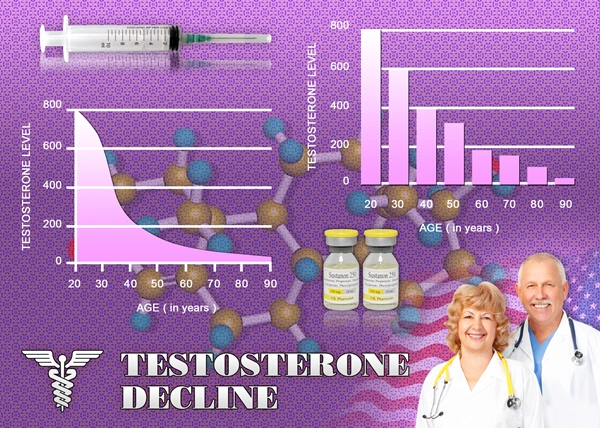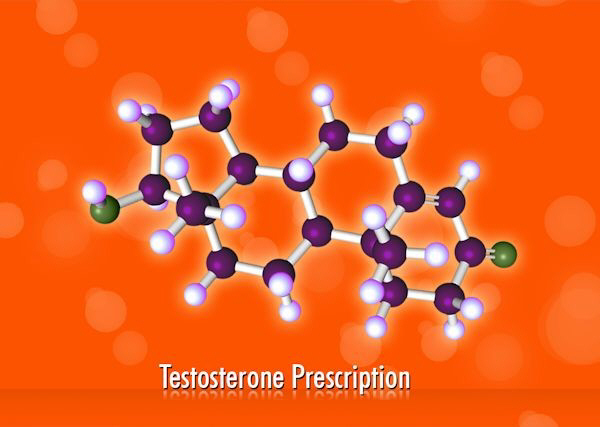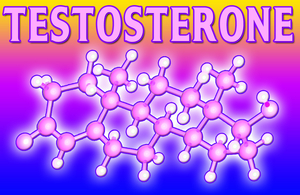
You've come to our clinic after hearing about the benefits of testosterone replacement therapy (TRT), and you'd like to learn more before trying the treatment.
Great -- Knowledge is power. Here is a short primer on testosterone esters that will cut through the confusion, and allow you to make an informed, educated decision.
What is an “Ester”?
The term ester is often used in the language of testosterone replacement therapy. As with all new words, it may sound confusing, but relax, it's not nearly as complicated as it seems.
Video Link: https://vimeo.com/290557424
Video Download: Click Here To Download Video
Video Stream: Click Here To Stream Video
Video Link: https://vimeo.com/290559740
Video Download: Click Here To Download Video
Video Stream: Click Here To Stream Video
Most testosterone replacement regimes are injections that include a few different types of testosterone: Testosterone Cypionate, Testosterone Propionate or Testosterone Enanthate, or, more commonly, a blend of these and possibly a few other substances.
These components are all testosterone and contain identical molecules.
The only difference between them is the “ester.” The definition of an ester is “a chain composed of hydrogen, carbon, and oxygen atoms attached to the testosterone molecule which must be broken down creating a 'timed release' in the body once injected.”
The critical thing to remember?
In spite of the testosterone molecule remaining the same regardless of the ester, each ester can yield somewhat different results.
Another definition of an ester is this: an ester is merely a name for a chemical compound that forms as a consequence of a reaction between a carboxylic acid and alcohol.
Perhaps the easiest way to define an ester is this simple explanation: esters are alterations made to the testosterone molecule to increase the time the liver metabolizes it.
This modification prevents you from being burdened by frequent injections, since the harder it is for the liver to break it down, the longer the injected testosterone stays active in your bloodstream.
There are several different testosterone esters.
The most familiar ones are testosterone enanthate and testosterone cypionate since these are commonly  prescribed. Lesser used esters are acetate, propionate, phenylpropionate, isocaproate, decanoate, and undecanoate.
prescribed. Lesser used esters are acetate, propionate, phenylpropionate, isocaproate, decanoate, and undecanoate.
As mentioned earlier, esters are a chain of carbon, hydrogen, and oxygen molecules.
The chief difference between the esters is the number of carbon and hydrogen atoms that make up the chain.
For example, the cypionate ester consists of 8 carbon, 14 hydrogen, and two oxygen atoms, while the propionate ester is made up of 3 carbon, six hydrogen, and two oxygen atoms.
The Important Role Testosterone Esters Provide
Esters improve the solubility of testosterone in oil.
This improvement is significant because it slows the release of testosterone once it is injected into the body.
This is  needed, due to testosterone's weak solubility in both water and oil.
needed, due to testosterone's weak solubility in both water and oil.
As a result of the addition of an ester, the release into the bloodstream slowed.
This slowing enables the injected testosterone to stay active longer in the body.
Without modification, testosterone must be injected repeatedly and frequently, sometimes even daily.
Frequent injections are required to keep a high level of testosterone in the blood where it is most efficient and delivers the maximum benefit.
Frequent injections are inconvenient, and here is where esters come to the rescue.
 When esters are added to testosterone, it becomes less soluble in water and more soluble in oil.
When esters are added to testosterone, it becomes less soluble in water and more soluble in oil.
Also, if an ester is loaded with carbon atoms, the more soluble it becomes in oil.
The higher the level of carbon groups in the ester, the more soluble in oil it is, and less soluble in water.
This level of solubility is named “the partition coefficient,” which means the higher the solubility in oil, the higher the partition coefficient.
Why is this important?
To keep it simple, the partial coefficient determines how long testosterone stays in the bloodstream.
If the testosterone moves too rapidly from the oil into the blood, it quickly spikes, then promptly drops as the dose evaporates.
If testosterone is injected directly into the muscle from a water suspension brand, the bloodstream puts it to work immediately, due to its low partition coefficient.
This results in an immediate blast of testosterone, but it is used up very quickly...too quickly since it takes some time to deliver the full benefits.
For this reason, testosterone cypionate and testosterone enanthate are popular choices of TRT, since they both have a high partition coefficient.
Once injected, testosterone stays in its esterified form in the muscle tissue.
Then, it will be delivered in small amounts by the blood, and circulate throughout the entire body at a rate that will guarantee maximum efficiency.
Keep this in mind: The difference between “fast-acting” and “slow-acting” testosterone esters is referring to the partition coefficient solubility in oil. As mentioned earlier, the more carbon atoms in an ester, the more it is soluble in oil.
These are called “slow-acting” esters, and this is what we strive for; they will remain active in your system longer.
“Fast-acting” kinds of testosterone contain esters that are less soluble in oil. This means they enter the blood quickly and are used up immediately, therefore not delivering the full benefits of the treatment.
The Common Types of Esters
There are several different esters used in testosterone replacement therapy. Here is a brief description of the common ones:
Testosterone Enanthate. This is one of the two main types of testosterone used for TRT in the U.S. The main reason is that enthanate is slow-acting, with a slow-release time of between 8 to 10 days.
The advantage of enanthate is injection is only required either weekly or as infrequently as once every three weeks. Its pharmaceutical name is Delatestryl, and it is also available through compounding pharmacies. Delatestryl is suspended in sesame oil, while the compound version of enanthate can be blended with sesame, cottonseed, or several other suitable oils.
Testosterone Cypionate. This is the second of the two main types of testosterone prescribed in America for testosterone replacement therapy. It is also a
 slow-acting ester, with release time and injection time-frame virtually identical to enanthate.
slow-acting ester, with release time and injection time-frame virtually identical to enanthate.The pharmaceutical name of cypionate is Depo-Testosterone. The difference between cypionate and enanthate is that cypionate is suspended in cottonseed oil instead of sesame. Cypionate is also obtainable through compounding pharmacies, with a mix similar to enanthate.
Testosterone Propionate. Propionate is not commonly prescribed, for a few reasons. First, it is a fast-acting ester, with a release time of merely three to four days. Therefore, it needs injecting more frequently. Second, some users have stated that the injection can be painful, and there have been reports of puffiness and discomfort at the injection site. Testosterone propionate is sold under the names “Testovis” and “Virormone.”
Sustanon. This brand consists of two different types of injectable testosterone that include a mix of testosterone esters. The first formula is called “Sustanon 100” and includes three testosterone esters: testosterone propionate, testosterone phenylpropionate, and testosterone isocaproate. “Sustanon 250” contains these three and one more: testosterone decanoate. These formulas are highly versatile since they include both fast-acting and slow-acting esters. Also, their injection schedule can be weekly or monthly. This brand is not prescribed in the United States.
Testosterone undecanoate. This is an oral form of testosterone. As a rule, oral TRT places more stress on the liver. However, testosterone undecanoate is not a c-17 alpha-alkylated hormone. This allows it to be absorbed through the small intestine directly into the lymphatic system, which places far less stress on the liver.
But there is a disadvantage of testosterone undecanoate: it has a very short shelf life, perhaps only 3 to 4 hours in the body. The result is the need for frequent dosing -- between 3-6 capsules daily. When compared to injectables, this is more expensive. It is sold under the brand names of Andriol, Androxon, Understor, Restandol, and Restinsol. Testosterone undecanoate is not currently available in the U.S.
Testosterone Phenylpropionate. With a release time of one to three weeks, this is considered a slow-acting ester. It is sold under the name brand of Testolent.
Omnadren. This is a mixture of four different testosterone esters: testosterone propionate, phenylpropionate, decanoate, and isocaproate. Omnadren is very similar to Sustanon since it contains both fast-acting and slow-acting esters. Omnadren's injection frequency can range from weekly to monthly. It is quite popular in Europe.
Aqueous testosterone suspension. This is a very brief form of injectable testosterone, as it usually exits the body within a few hours. This explains why it is not the first choice for TRT. Its brand name is “Aquaviron.” This is why most people undergoing testosterone replacement therapy prefer cypionate or enanthate; longer-lasting means fewer injections.
Testosterone Undecanoate Injection. This is an injectable version of undecanoate. Internationally it is sold under the name Nebido, and in the United
 States is called Aveed. This is a long-lasting ester that stays in the system for extended periods. The injection is usually administered every 10-14 weeks, and for use in the U.S., the manufacturer claims that only five doses are needed all year! The catch? There are many concerns about adverse side effects.
States is called Aveed. This is a long-lasting ester that stays in the system for extended periods. The injection is usually administered every 10-14 weeks, and for use in the U.S., the manufacturer claims that only five doses are needed all year! The catch? There are many concerns about adverse side effects.Testosterone Suspension. Testosterone suspension acts fast...very fast. This is an ester-free, water-based form of testosterone. For this reason, it is not the preferred testosterone for TRT. Instead, it is hugely popular in the performance-enhancing circles of athletes, especially power-lifters, since it delivers a rapid effect, and skyrockets explosiveness. One concern is the painful injections. There have been reports of the injected limb becoming numb for a period, with moving the arm becoming challenging. All-in-all, the risks outweigh the benefits when it comes to testosterone suspension.
Testosterone Cypionate vs. Testosterone Enanthate: Which One Should You Choose?
As mentioned earlier, these are the two most common types of testosterone esters available in the United States.
Here are a few differences that will hopefully enable you to make an informed choice:
Enanthate is manufactured worldwide, and is, therefore, more common throughout the world. Cypionate is usually more common in America.
Cypionate is suspended in cottonseed oil; enanthate is suspended in sesame oil.
Enanthate consists of a 7-carbon ester chain. Cypionate has an 8-carbon ester chain. The rule here is that the higher number of carbons the ester contains, the more soluble in oil and less soluble in water it becomes. Therefore, cypionate has a somewhat slower release and stays in the system a bit longer.
Enanthate has a slightly more considerable amount of testosterone per milligram than cypionate since it is one atom lighter. However, the practical difference is minimal.
Cost. Enanthate is slightly cheaper than cypionate.
As you have probably figured out, the differences between the two are relatively insignificant.
When it comes to effectiveness, many users that have tried both can't tell the difference in how they feel, and the results delivered.
So there you have it. Now you know just how significant esters are.
They have one primary job to accomplish: slowing the release of testosterone from the injection site into the bloodstream.
The ester lowers the water solubility of the testosterone, which causes it to accumulate in the muscle tissue. Then, it is picked up by the circulating blood and slowly enters the system.
Remember this simple rule: The longer the ester chain, the lower the water solubility. Thus, it takes longer for the full dose to fully circulate throughout the bloodstream. Testosterone is testosterone, regardless of the label.
Testosterone is testosterone, regardless of the label.
It is the ester that makes the difference since the critical factor is the amount of time it takes for the testosterone to get to work.
Our trained, experienced, and professional staff will guide you through this maze, every step of the way -- the price, the frequency of injection, close monitoring with extensive blood-work, answering any questions you may have, and addressing all of your concerns -- we do it all.
Contact us, for the most cutting-edge, up-to-date testosterone replacement therapy. We guarantee our results, delivered in a safe, efficient, and convenient manner.
Contact Us Today For A Free Consultation

- Common Chemicals Found in Plastic May Lower Testosterone Levels [Last Updated On: January 18th, 2024] [Originally Added On: September 29th, 2020]
- There is No “Testosterone Controversy” [Last Updated On: June 30th, 2024] [Originally Added On: September 30th, 2020]
- Is Your Leadership Ability Determined by Your Testosterone and Cortisol Levels? [Last Updated On: January 31st, 2024] [Originally Added On: October 1st, 2020]
- Recent Study Confirms: Testosterone DOES NOT Increase Heart Attack Risk! [Last Updated On: February 10th, 2024] [Originally Added On: October 5th, 2020]
- Research Makes a Case for Testosterone Replacement Therapy (TRT) [Last Updated On: December 21st, 2023] [Originally Added On: October 8th, 2020]
- Testosterone: How Much Do You Really Know About This Potent Hormone? [Last Updated On: July 16th, 2024] [Originally Added On: October 9th, 2020]
- Possible Health Benefits of Testosterone HRT (TRT) [Last Updated On: December 25th, 2023] [Originally Added On: November 20th, 2020]
- Testosterone Facts to Consider When Deciding on Testosterone Replacement Therapy [Last Updated On: April 6th, 2024] [Originally Added On: November 21st, 2020]
- Diabetic Men with Low Testosterone Run Higher Risk of Developing Atherosclerosis [Last Updated On: February 9th, 2024] [Originally Added On: November 22nd, 2020]
- Things You Might Not Have Known About Testosterone [Last Updated On: January 26th, 2024] [Originally Added On: November 23rd, 2020]
- Testosterone Propionate [Last Updated On: February 14th, 2022] [Originally Added On: January 17th, 2022]
Word Count: 1963





















